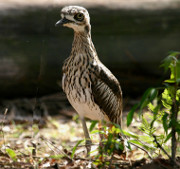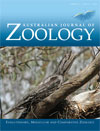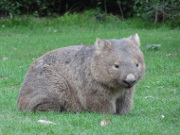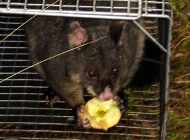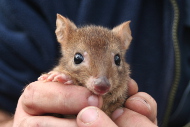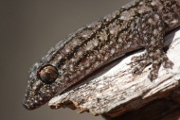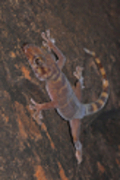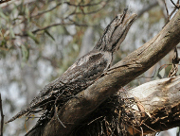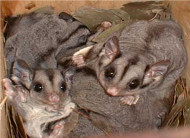Australian Journal of Zoology
Volume 61
Number 6 2013
The bush stone-curlew (Burhinus grallarius Latham), a ground-nesting nocturnal bird, is endangered in southern Australia due to habitat modification and introduced predators. We isolated variable microsatellite repeat sequences and designed primers for PCR amplification of eight microsatellite loci in this species.
Photo by Nevil Lazarus.
We used digital cameras to test whether strong lighting would discourage nuisance wombat activity under an historic cottage in a semi-agricultural environment. Lights were ineffective at reducing wombat activity, but they did alter the activity of grey kangaroos and some birds.
Photo by Erin Roger.
Seasonal blood samples were collected from wild adult mountain brushtail possums (Trichosurus cunninghami) in the Strathbogie Ranges (Victoria) over two years. Parameters examined included standard haematological values and selected serum biochemical values. Associations with sex, season, age, habitat type, disease status (rumpwear) and parasite loads were detected.
Photo by Jasmin Hufschmid.
The present study aimed to elucidate the involvement of viral pathogens in the decline of the woylie (Bettongia penicillata ogilbyi). Results indicated no exposure to any of the viral pathogens investigated, indicating that wild woylie populations are currently naïve and may be at risk if these pathogens were to be introduced.
Photo by Sabrina Trocini.
Changes in distribution for less mobile species are likely to result in losses to intraspecific genetic diversity at the population level. We were able to predict losses by adopting a method which combined realistic estimates of dispersal, with predicted changes in species distributions under global climate change scenarios.
Photo by Paul Edward Duckett.
We present an analysis of the biogeography of the giant cave and tree geckos (Pseudothecadactylus) of northern Australia. This genus shows a novel and highly relictual distribution that appears to have been largely shaped by a history of attenuation, isolation and persistence.
Photo by Paul Oliver.
Tawny frogmouths (Podargus strigoides) in south-east Australia place their nests on open coarse-barked branches orientated to the north-east. This would fit their cryptic plumage and behaviour, expose the nesting birds to sunshine, shelter them from prevailing wind, give good visibility for detecting predators and clear space for rapid escape.
Photo by Stuart Rae.
The current paper describes the development of seven new microsatellite loci from Petaurus breviceps. Together with eight loci from previous studies of gliders, we tested their utility for amplification, multiplexing and polymorphism in two glider species, P. breviceps and P. norfolcensis.
Photo by Mansoureh Malekian.
